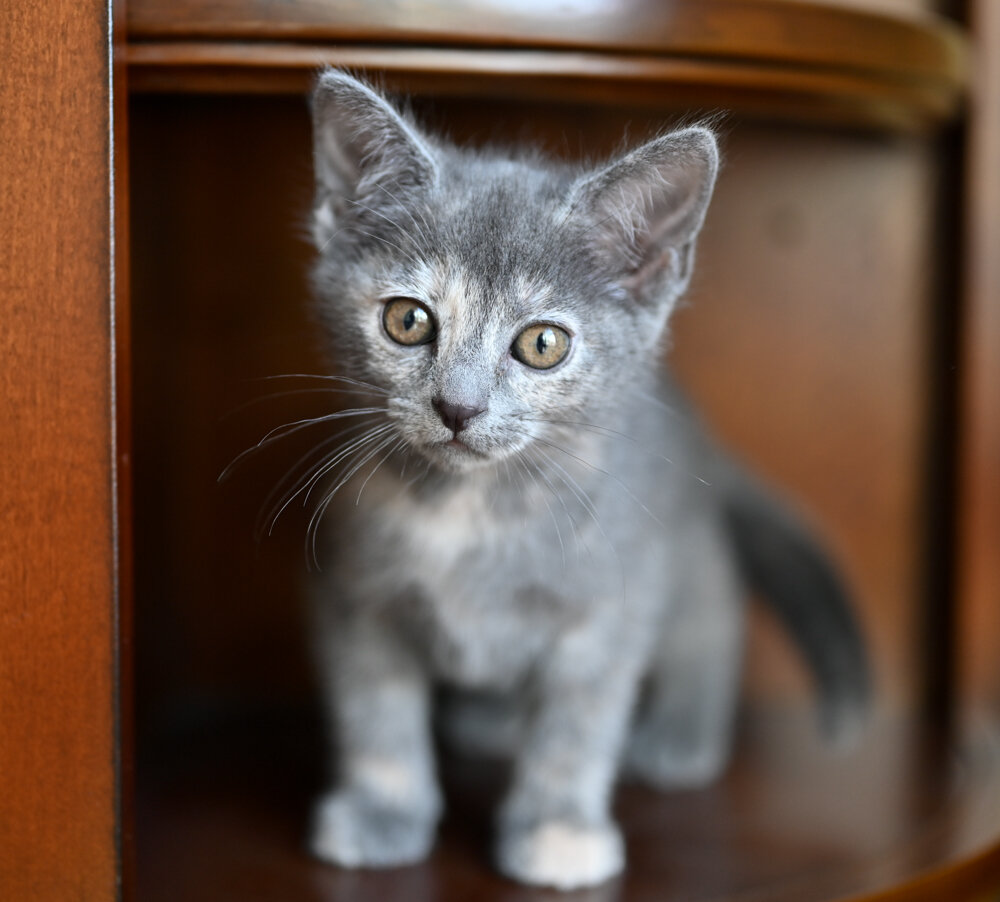Fascinating Facts About Tortoiseshell Cats
All cats are unique and beautiful in their own way, but there’s something special about tortoiseshell cats, nicknamed “torties.” Their coats are certainly eye-catching and their reputation for being a bit feisty is infamous. Whether you’re interested in adopting a tortie or just want to learn more about these magnificent cats, here are a few fun facts about them.
Tortoiseshell cats aren’t a specific breed.
Tortoiseshell cats aren’t a specific breed but are cats with a distinctive coat pattern, similar to tortoiseshell material. The pattern combines two colors — and never white — and is typically described as ginger-red and black. The “red” patches can sometimes be cream, orange, yellow, or gold, and the “black” can sometimes be gray, chocolate, or tabby. Torties with the tabby pattern are often called “torbies.” Several different types of breeds can exhibit tortoiseshell markings, such as Maine Coons.
The most common coat style of tortoiseshell cats is probably the one you’re thinking of when you picture them: mosaic, with the colors randomly mixed together. If a cat with a tri-colored coat comes to mind (most commonly white, orange, and black), you’re actually thinking of a calico cat! Since calicos can have tortoiseshell patches, it’s completely understandable if you’ve been mixing up torties and calicos.
Photo by Andrew Dorman
Tortoiseshell cats are usually female.
If you’ve ever met a tortie, chances are, they were female. Almost all tortoiseshell cats are female! About 1 in 3,000 tortoiseshell cats are male, making them quite uncommon. This is because two X chromosomes are needed to produce the trademark tortoiseshell coloring of black, orange, and yellow/gold, while male cats only have one X and one Y chromosome. Male torties have an extra X chromosome, making them a very rare XXY. Since this occurs due to a genetic anomaly, male tortoiseshell cats are also usually sterile, making them even more rare!
There are many myths about tortoiseshell cats.
In many cultures, tortoiseshell cats are considered to be good luck, such as in Ireland, where they’re said to bring their owners good fortune. In Japan, torties are thought to protect ships from bad storms and shipwrecks, and even ghosts. Since male tortoiseshell cats are so rare, ancient Celts believed it was a good omen if a male tortie stayed in their home. English lore holds that warts could be healed by rubbing a male tortie’s tail during the month of May. Some believe that if you dream of a tortoiseshell cat, you’ll be lucky in love!
“Tortitude” may also be a myth.
You may have heard the term “tortitude” to describe a tortoiseshell cat. Many people believe torties are much more high-strung, feisty, and loud compared to other cats, and have an independent and unpredictable nature. But is this actually the case?
In a 2015 study conducted by the UC Davis Veterinary Medical Teaching Hospital, researchers looked at whether there was a direct link between a cat’s behavior and their coat color, with a focus on tortoiseshell cats and their infamous reputation. The study collected information from cat guardians via an online survey, and over 1,200 people responded. Black and white, gray and white, and female calicos and torties were reported to be more aggressive towards people during veterinary visits, while being handled, and just during everyday interactions. However, when researchers closely analyzed the possible differences between male and female cats and differences among coat colors, they found little difference in aggression.
In an interview with the Sacramento Bee, Dr. Elizabeth Stelow, the study lead, said that while the same genetics that dictates a cat’s coat color may play a role in aggression, more studies need to be done to explore the theory. While this is the first study to examine the relationship between a cat’s coat coloring and their behavior, it’s worth noting that its scope is limited, since researchers didn’t directly observe the cats and relied on the observations made by cat guardians. Ultimately, the jury is still out on whether torties have more cattitude compared to other cats!
Photo by Erica Danger
While we never know who might show up at our local shelters and be transferred to Cat Town, we’ve had quite a few tortoiseshell cats come through our Adoption Center over the years! You can keep an eye on our adoption page and social media to see our newly available cats. Every cat has their own distinct, unique, and special personality, regardless of their coat coloring and pattern. It’s all about who you click with, so don’t let any worry of “tortitude” stop you from falling in love with your new best friend!


